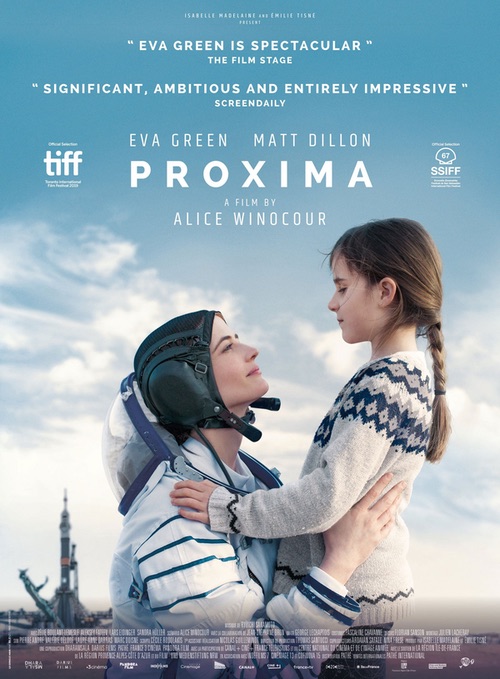Review: Proximaby Jeff Foust
|
| Space enthusiasts may like the movie because it does a good job showing the astronaut training experience. Much of the movie was filmed on location in Star City and at the Baikonur Cosmodrome. |
The central characters in Proxima are Sarah Loreau (Eva Green), a French astronaut at ESA selected for a one-year mission to the ISS, and her young daughter Stella, who Sarah has been raising as a single mother. Sarah’s selection for the mission frays her relationship with Stella, as Sarah heads off to Russia for training for her Soyuz launch while Stella stays with her father in Germany. Those stresses are exacerbated by a hectic training schedule and her American crewmate, Mike Shannon (Matt Dillon), who is skeptical she is up to the job.
Space enthusiasts may like the movie because it does a good job showing the astronaut training experience. Much of the movie was filmed on location in Star City, the cosmonaut training center outside Moscow, as well as at the Baikonur Cosmodrome. There are scenes in the pool used for practicing for spacewals, and others involving wilderness survival training. The film had the support of ESA, and ESA logos are prominent throughout the movie. Even Thomas Pesquet, the ESA astronaut whose first mission to the ISS was called “Proxima,” has a cameo in the movie debriefing the crew after a training exercise. (NASA, by contrast, was not involved, and Mike Shannon’s flight suit instead has the logo of a fictional “ISA.”)
What the movie has in verisimilitude, though, it lacks in drama. There are tensions in the relationship between Sarah and Stella, and to a lesser extent between Sarah and Mike, but the viewer never really feels like they will derail her flight. The movie includes other episodes, like a skin infection and a twisted ankle, that seem to threaten the mission, but they quickly pass by, not resolved so much as simply forgotten.
During final preparations for the launch, the mission’s third crewmember, Russian cosmonaut Anton Ocheivsky (relegated to a relatively minor role in the movie) offers some advice to Sarah: “We all prepare for leaving, but that’s not the hard part. The hard part is coming back, when you realize that life goes on without you.” That aspect of an astronaut’s life is unfortunately unexplored in Proxima, which focuses on the relationships leading up to launch. It is, nonetheless, good advice for those seeking to follow in Sarah’s fictional footsteps and become an ESA astronaut for missions to the space station or beyond.
Note: we are using a new commenting system, which may require you to create a new account.
